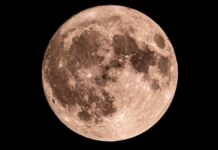A new study has revealed that, under the extremely cold conditions on Saturn’s largest moon, Titan, the rules of chemistry as we understand them on Earth can be rewritten. Scientists have found that water and oil-like substances can form stable mixtures—a surprising discovery that opens possibilities for complex molecular interactions throughout our solar system.
Challenging a Fundamental Chemical Rule
The established principle that “like dissolves like” dictates that mixtures containing polar and nonpolar substances generally separate into distinct layers. Polar molecules, like water or hydrogen cyanide, possess an uneven distribution of electrical charge, creating areas with slight positive and negative charges that attract each other. Nonpolar compounds, such as oils and hydrocarbons, have symmetrical charge arrangements and interact only weakly with neighboring nonpolar molecules.
However, research from NASA’s Jet Propulsion Laboratory and Chalmers University of Technology in Sweden has demonstrated that hydrogen cyanide, a polar molecule, forms stable co-crystals with methane and ethane, two extremely nonpolar hydrocarbons, on Titan’s surface. This unexpected interaction defies conventional chemical understanding. “This contradicts a rule in chemistry, ‘like dissolves like,’ which basically means that it should not be possible to combine these polar and nonpolar substances,” explained lead study author Martin Rahm, an associate professor of chemistry.
Recreating Conditions on Titan
The team sought to understand the fate of hydrogen cyanide produced within Titan’s atmosphere, which contains high levels of nitrogen, methane, and ethane. These compounds cycle through a localized weather system similar to Earth’s water cycle. To investigate, researchers recreated Titan’s surface conditions by combining mixtures of methane, ethane, and hydrogen cyanide at temperatures around -297 degrees Fahrenheit (-183 degrees Celsius). Spectroscopic analysis—a method of studying chemicals by observing how they interact with light—revealed a surprising result: these seemingly incompatible compounds were interacting much more closely than previously observed.
The analysis showed that molecules of nonpolar methane and ethane slotted into gaps within the solid crystal structure of hydrogen cyanide—a process known as intercalation. This created an unusual co-crystal containing both sets of molecules.
From Experiment to Theory
To explain their observations, the NASA team collaborated with researchers at Chalmers University of Technology to model hundreds of potential co-crystal structures, assessing each for stability under Titan’s frigid conditions.
“Our calculations predicted not only that the unexpected mixtures are stable under Titan’s conditions but also spectra of light that coincide well with NASA’s measurements,” Rahm explained.
Through theoretical analysis, researchers identified several stable crystal forms, suggesting that the intermolecular forces within the hydrogen cyanide solid are unexpectedly strengthened by this mixing.
Significance and Future Exploration
This discovery has profound implications for understanding chemical processes on Titan and potentially throughout the solar system. The ability of seemingly incompatible molecules to interact and form stable structures raises exciting possibilities for complex molecular interactions, perhaps even the potential for novel organic compounds to form.
As Athena Coustenis, a planetary scientist at the Paris-Meudon Observatory, observed, the combination of experimental and theoretical findings is particularly impressive, and she is eager to see how future data, including that from NASA’s Dragonfly probe (scheduled to arrive on Titan in 2034), will complement the study’s findings.
The finding that water and oil-like substances can mix under specific conditions drastically changes our understanding of chemical interactions in extreme environments within our solar system.

























